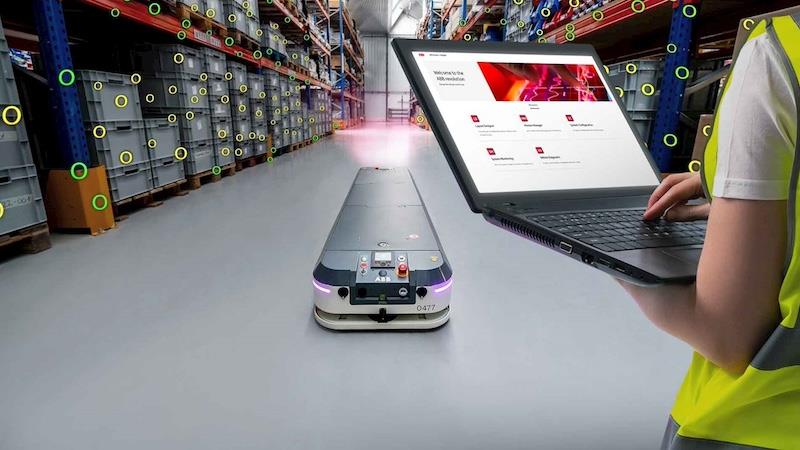- TECHSWU
- Posts
- TECHSWU #40
TECHSWU #40
Welcome to TECHSWU, your go-to destination for all things tech that matter in your daily life!



A video of a humanoid robot in Saudi Arabia inappropriately touching a female reporter at an AI conference last week went viral, sparking controversy and leading some people to call the robot a "pervert." However, experts suggest that the incident was unlikely to be intentional, as robots are not self-aware and, therefore, incapable of feeling sexual desire or anger.
This incident is not the first time a robot has acted inappropriately, such as when a child's finger was broken during a game of chess with a robot in 2022. Humanoid robots are still a long way from achieving human-like capabilities and are limited in functionality.
Despite their potential impact on the future of work, their everyday influence remains minimal. The incident raises questions about the need for greater safeguards and ethical considerations in human-robot interactions.


The electric motorcycle industry has seen significant growth and innovation in recent years, with consumers increasingly seeking eco-friendly transportation options. To help riders navigate the market, StudyFinds has compiled a list of the top five motorcycles, based on the consensus of eight experts.
Topping the list is the Arc Vector, described as a groundbreaking electric motorcycle that aims to redefine how motorcycles are perceived. It features impressive performance capabilities, a range that surpasses anything else on the market, and a promise of electric adventure.
Other motorcycles on the list include the LiveWire ONE, the Energica Eva Ribelle, the Lightning LS-218, and the Energica Experia. These motorcycles boast sleek designs, powerful motors, and impressive ranges, making them strong contenders in the electric motorcycle market.


The global electric car market is expected to see significant growth by 2030, according to a new research publication by Advance Market Analytics. The study highlights several factors that are driving this growth, including increasing research and development spending across the world.
The market is also being fueled by a shift from normal vehicles to electric vehicles in different countries, driven by environmental concerns and the scarcity of oil resources. Another key driver is the growing demand for low-emission, long-range electric cars, as well as advancements in battery technology and the decrease in the cost of electric vehicle batteries.
The report identifies opportunities for government initiatives and increased research and development activities in the electric car market. With these trends and drivers in mind, the report concludes that the electric car market presents valuable opportunities for both individuals and companies.



In this article, the author highlights five of the top Amazon gadgets that can add smarts and convenience to your home. The gadgets include the Amazon Smart Air Quality Monitor, the Blink Mini 2 plug-in smart security camera, the Amazon eero 6+ mesh Wi-Fi router, the Amazon Fire HD 8 tablet, and the Amazon Astro household robot.
The Smart Air Quality Monitor helps you track allergens and ensure safety by monitoring carbon monoxide levels, while the Blink Mini 2 provides real-time motion alerts for home security. The eero 6+ mesh Wi-Fi router eliminates Wi-Fi dead zones, the Fire HD 8 tablet offers enhanced performance and entertainment options, and the Astro household robot can navigate your home, detect sounds, and send alerts.
These gadgets offer convenience and functionality without breaking the bank.

The U.S.
Department of Labor (DOL) has released Field Assistance Bulletin No. 2024-1, which sheds light on how artificial intelligence (AI) and automated systems in the workplace can violate the Fair Labor Standards Act (FLSA).
The bulletin addresses various issues related to the use of AI and automation, including scheduling, timekeeping, tracking employee location, and calculating wages. For example, employers that use AI to monitor employee productivity must ensure that these systems accurately determine "hours worked" under the FLSA.
The bulletin also discusses potential compliance problems when using location-based monitoring to track employees' work hours. In addition, FAB 2024-1 provides guidance on how employers should integrate AI and automation into their labor practices while maintaining compliance with federal laws.
The document emphasizes the need for transparency, accountability, and oversight when implementing AI-driven systems in the workplace.


Investing in artificial intelligence (AI) can yield high returns, but choosing the right companies can be risky. To mitigate this risk, investors can opt for AI exchange-traded funds (ETFs) over individual stocks.
ETFs are funds that invest in companies positioned to benefit from AI adoption. There are three types of AI stocks in these ETFs: enablers, engagers, and enhancers.
Enablers supply core components for AI development, while engagers incorporate AI technology into their products. Enhancers contribute to the AI ecosystem without directly selling AI solutions.
ETFs may include one or more of these types of AI stocks, along with robotics companies. The seven best AI ETFs with efficient expense ratios, net asset values, and portfolio diversity are Vanguard Information Technology ETF (VGT), Fidelity MSCI Information Technology Index ETF (FTEC), SPDR S&P Kensho New Economies Composite ETF (KOMP), iShares Robotics and AI Multisector ETF (IRBO), First Trust Nasdaq AI and Robotics ETF (ROBT), Defiance Quantum ETF (QTUM), and Invesco AI and Next Gen Software (IGPT).
Each ETF has different strategies and advantages. For example, VGT and FTEC have a focus on mega-cap tech stocks, while KOMP provides exposure to companies pursuing transformative innovation in various sectors, including AI.

Meta AI, the chatbot developed by Meta, is now using news outlets as a source for its AI-generated content. This move has raised concerns about the potential damage it could cause to the news industry.
Meta's chatbot can scan news outlets and provide users with summaries of the latest stories and headlines. This comes after Meta previously banned links to news sources on Facebook and Instagram in Canada to avoid paying publishers as required by a new law.
The use of news content by Meta AI could potentially bypass the need for users to visit news websites and consume their original content. This could lead to a decrease in traffic and ad revenue for news outlets, further exacerbating the challenges faced by the industry.
Overall, Meta's utilization of news for its AI content has sparked worries about the impact it could have on the already struggling news industry.


GITEX Africa 2024 is just around the corner, and if you're planning on attending, you'll want to make sure you make the most of your experience. This annual technology exhibition is renowned for showcasing the latest advancements in artificial intelligence, virtual reality, robotics, and more.
To ensure you have a successful visit, there are a few key tips to keep in mind. Firstly, come prepared.
Research the exhibitors and create a game plan to prioritize your time. With over 300 exhibitors expected, it's important to have a clear idea of who you want to engage with.
Networking is another crucial aspect of GITEX Africa. Take advantage of the opportunity to connect with industry professionals, potential partners, and even investors.
Come armed with business cards and be ready to have meaningful conversations.
Additionally, don't forget to attend the various conferences, seminars, and workshops offered during the event.
These sessions provide valuable insights into emerging trends and industry best practices.
Overall, GITEX Africa 2024 promises to be an incredible event where you can discover groundbreaking technologies, forge new connections, and gain valuable knowledge.
So get ready to immerse yourself in the future of technology and make the most of your GITEX experience.

Head transplants performed by robots may become a reality within the next decade, according to a startup called BrainBridge. The company, founded by molecular biologist Hashem Al-Ghaili, aims to use high-speed robotic systems to transplant heads onto compatible donor bodies while maintaining the condition of the brain.
The procedure, driven by AI algorithms, involves robotic arms removing the head and attaching it to a new torso, reconnecting the spinal cord, nerves, and blood vessels. The startup claims that this technology offers hope to patients suffering from untreatable conditions such as cancer, paralysis, and neurodegenerative diseases.
While the medical science community has remained largely silent in response to BrainBridge's launch, Al-Ghaili's innovative approach is recognized. However, the project is still in the conceptual phase, and those interested will need to be patient.


Meta's Ray-Ban smart glasses now have the ability to share directly to Instagram Stories, eliminating the need for a phone. Users can simply command the glasses to upload their last photo or post a new one to Instagram.
Additionally, the glasses are now compatible with Amazon Music and Calm, offering users the ability to listen to music and access mindfulness activities. Meta has teamed up with Calm to provide a complimentary three-month subscription to new Ray-Ban smart glasses customers.
The glasses also feature an AI assistant that helps users operate them with their voice and see real-time data. These new features will be rolled out gradually.
Overall, the Ray-Ban smart glasses continue to add functionality and convenience for users.


Anade Davis, a self-taught black data scientist with over 15 years of real estate experience, is making waves in the industry with his company AI Smart Homes. Davis and his team of architects and engineers are developing high-tech homes infused with artificial intelligence (AI) technology.
Using advanced construction techniques, such as robot 3D printers, they aim to build fully equipped smart homes in 90 days or less. These futuristic homes include features like AI appliances, robot assistants, and advanced electronics.
Davis's goal is to provide high-quality, solar-powered homes at an attainable cost, benefiting developers, investors, and future homeowners. As a successful African American in the data science field, Davis is an inspiration to aspiring black scientists and entrepreneurs.
With his innovative approach to homebuilding, he is setting new standards for AI-powered living experiences.


According to leaks, the price of the Samsung Galaxy Ring is expected to be between $300 and $350, which has disappointed fans. However, it's not just the price that's causing concern; there are also rumors that the smart ring will require a monthly subscription.
While the subscription is expected to be less than $10 per month, the idea of ongoing payments for a wearable device is unpopular in a market that already has numerous subscription options. It's uncertain whether the subscription will be mandatory or simply give users access to a premium plan with more health insights.
Despite the disappointment, the Samsung Galaxy Ring is still highly anticipated. It is expected to offer a range of health monitoring features, integrate with the Samsung Health app, and potentially include advanced options like blood pressure monitoring and aFib detection.
The official announcement for the Galaxy Ring is rumored to be scheduled for July 10.

The global smart solar technology market is booming, with increasing R&D spending driving growth in the industry. The renewable energy sector has the potential to revolutionize the global economy, and smart solar technology is playing a key role in this transformation.
Smart solar technology offers low-cost, technologically advanced energy solutions that can improve energy security and reduce environmental impact. Key players in the market include ABB Ltd.
, Echelon Corporation, Schneider Electric, and Siemens AG. The market is segmented by application, end-user, and component, with opportunities arising from ongoing smart city projects in developing countries.
Market drivers include increasing adoption of smart grid technologies, growing consumer awareness of energy conservation, and rising installations of smart solar energy grids. Regions covered in the market include North America, Europe, Asia Pacific, Oceania, South America, and the Middle East & Africa.

ABB Robotics has announced the launch of its new autonomous mobile robot, the Flexley Tug T702, which is equipped with Visual SLAM navigation technology. The robot also comes with the new AMR Studio software, allowing first-time users to easily program and operate fleets of mobile robots.
This advancement in technology simplifies configuration and reduces commissioning time, making it easier for robots to operate autonomously in the workplace. With a shortage of skilled labor, this is a crucial development.
The AMR T702 is suitable for a range of industries, such as automotive and consumer goods, and is particularly well-suited to busy warehouses and fulfillment centers. The Visual SLAM technology enables the robot to make intelligent decisions in dynamic environments, while the AMR Studio software streamlines the programming and configuration process.
ABB plans to continue expanding its portfolio of mobile robots with Visual SLAM technology and AMR Studio software.